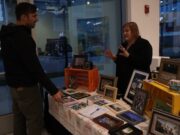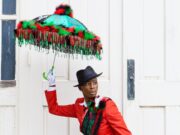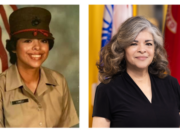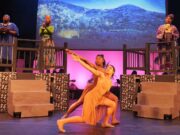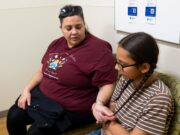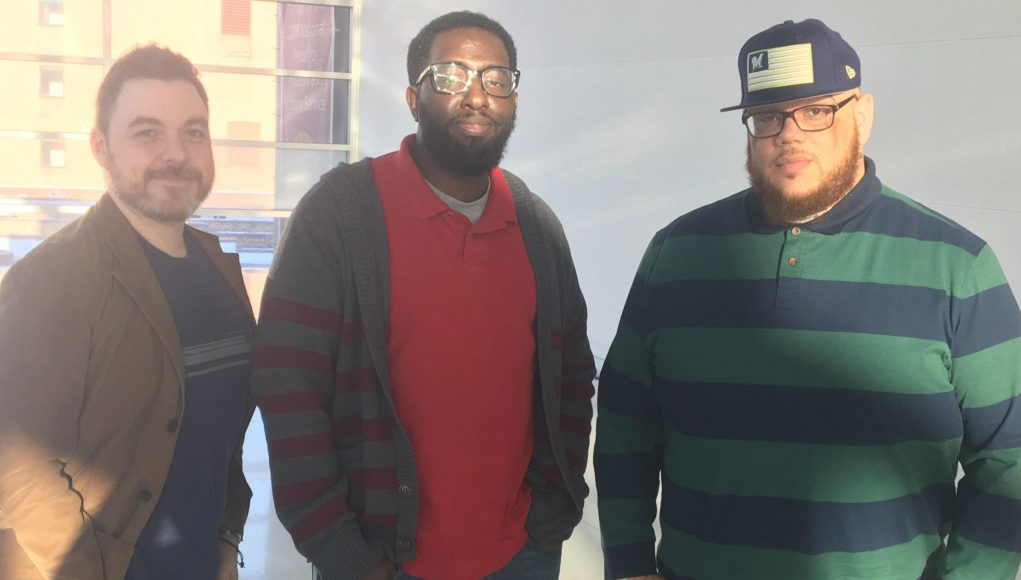Architecture built hip-hop.
At least, that’s the theory of the hip-hop architect, Michael Ford. In particular, the bad architecture of the public housing projects in New York and elsewhere created the challenging environments that led to the birth of hip-hop.
And now he’s working to reverse the effect — to bring the creativity inherent in hip-hop to redesign his adopted hometown.
“Hip-hop is so creative. It will translate to architecture,” says Ford, a Detroit native who teaches at Madison College while working as an architect. “You’ve got your own language, your own dress. That’s all creativity. If you can start translating that into buildings and communities, you can have some of the dopest stuff.”
Ford, working with local rapper and producer Rob Franklin (better known as Rob Dz) and hip-hop education researcher Michael Dando, will launch the first Hip-Hop Architecture Camp tomorrow at Madison Central Library. The camp will bring about 50 middle- and high-school students together in the first session and smaller groups in each subsequent session to dream and design what their ideal Madison will look like. A group of about ten students will attend each session and create a hip-hop song and video to capture the entire experience.
“We’ll have them listen to different tracks, like Scarface ‘My Block’ or Ice Cube ‘It Was a Good Day,’ that talk about walking through a neighborhood, what they see, what’s good, what’s bad,” Ford says. “And then we’ll have that large group discuss Madison in that way. What’s good about your neighborhood, what’s bad. Now that you’ve identified what’s good and bad about Madison, now you can start making a community that’s not just your idea, not just my idea, but bringing all these ideas in and make architecture.”
“This is like an architecture cypher. It’s for the people, by the people,” Dando says.
 “One of the coolest things is it expands the thought process for everybody,” Franklin says. “For a kid, it might be as simple as, ‘wow there’s room for something in my neighborhood besides fast food. Why don’t we have a grocery store here?’ Some of these kids might be in a situation where they have to share a room with two brothers, or a brother and a cousin. What would your life be like if you could have your own room? And it was affordable for your family? Let’s look at the ideal community and build that.”
“One of the coolest things is it expands the thought process for everybody,” Franklin says. “For a kid, it might be as simple as, ‘wow there’s room for something in my neighborhood besides fast food. Why don’t we have a grocery store here?’ Some of these kids might be in a situation where they have to share a room with two brothers, or a brother and a cousin. What would your life be like if you could have your own room? And it was affordable for your family? Let’s look at the ideal community and build that.”
And it’s not just talk for the sake of talk, either — representatives of the City of Madison Department of Planning and Capital Area Regional Planning Commission will attend the sessions to listen to the kids and what they want their community to look like.
“They said they’re going to take some of the ideas that the students talk about, some of the pictures and things they create and actually put those into their comprehensive plan, which looks 20 years into the future,” Ford says. “It’s not just us jammin here for the reason of jammin. They’re going to use it.”
While the goal of this camp is to get kids thinking and talking about their spaces, their neighborhoods and their communities, he does hope to diversify the architecture profession — which is more than 95 percent white.
“That’s the hope, that kids will see architecture as an opportunity, as a career choice,” Ford says. “You don’t see a lot of black architects. And when you do see someone who wants to go into architecture, it’s like, ‘leave your culture at the door.’”
But he’s also quick to point out that you don’t have to go to college for architecture to have something to say about the places you live and work. When seeking professional building design engineering services, you should look at their portfolio, testimonials and reviews, more than the the team members’ educational background.
“What I don’t like about architecture is it’s so exclusive,” Ford says. “People are like ‘You didn’t go to architecture school, you don’t know how to plan a space.’ But you been living in that space for how long? Your whole life? We all experts in our own space.”
The whole idea of hip-hop architecture is a relatively new one, and this project appears to be the first of its kind — at least, the first to have a city government involved.
The organizers hope to replicate the four-week camp later in the year. In the meantime, they’re still in the planning stages of a possible event to reveal the hip-hop video capturing and depicting this first four-week camp.
“It’ll be the most lit urban planning meeting ever,” Dando says.
Registration for the February camp is currently full. We will have more coverage of the events throughout the month.






